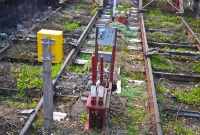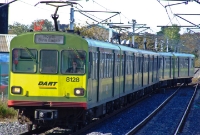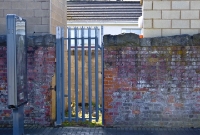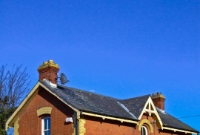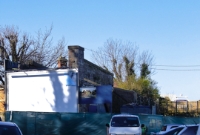Howth
Howth, that popular retreat of north Dublin, well known for its harbour and fishing industry, as well as its scenic location, was first served by rail when the Dublin & Drogheda Railway built their line from Amiens St to Howth in May 1847, in an attempt to rival that of the harbour at Dun Laoghaire. Always busy with suburban traffic, largely expended by the Great Northern Railway in the 1940s and 50s, the Howth branch became the terminus of the electrified DART services which commenced operation between Bray and Howth in 1984. Up to 1959, passengers could transfer straight from train at Howth Station onto the GNR's Hill of Howth tram line, which ran to the the summit of Howth and down to Sutton. This scenic tram line was unfortunately closed by CIE in June of that year.
The station building at Howth dates from the D&DR 1840s era, but the platform side, which has the GNR's unique yellow brick building, designed by W.H Mills, along with the typical canopy, was added in the late 19th century. At the end of the platform is Howth signal cabin, another typical GNR design, it's currently boarded up and 'switched out'. Outside the station the abutments of the former tram overbridge remain. Restored GNR Tram car No.9 can also be seen nearby at the Howth Transport Museum, along with other historic tram/road vehicles.
The station building at Howth dates from the D&DR 1840s era, but the platform side, which has the GNR's unique yellow brick building, designed by W.H Mills, along with the typical canopy, was added in the late 19th century. At the end of the platform is Howth signal cabin, another typical GNR design, it's currently boarded up and 'switched out'. Outside the station the abutments of the former tram overbridge remain. Restored GNR Tram car No.9 can also be seen nearby at the Howth Transport Museum, along with other historic tram/road vehicles.

